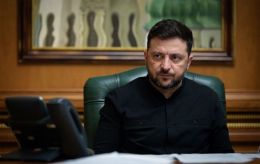Revenge for Kursk or energy attacks? Why Russia intensifies strikes on Ukrainian cities
 A Kyiv rescuer after the Russian shelling (photo: Getty Images)
A Kyiv rescuer after the Russian shelling (photo: Getty Images)
Whether Russia's increased missile and drone attacks on Ukraine are related to the Ukrainian Armed Forces' offensive in the Kursk region and whether Russian troops will try to destroy Ukraine's energy sector again - read in RBC-Ukraine article.
In recent weeks, Russia has once again increased the number of attacks on Ukraine, literally bombarding cities with drones and missiles daily. On the night of August 26 alone, Russia fired more than 100 missiles and 100 attack drones at Ukraine. The Russian shelling affected 15 regions, killing 7 people. Commenting on that night, Ukrainian President Volodymyr Zelenskyy called Russian leader Vladimir Putin a sick creature.
The Russian shelling became more frequent and large-scale after the Ukrainian army launched a military operation in the Kursk region. At the same time, Ukraine is preparing for the heating season, and the Russians are doing their best to ensure a winter blackout for Ukrainians.
Russian massive shelling of Ukraine
Russian troops began daily massive shelling of Ukraine around the end of August. The starting point can be considered the 26th of August when the Russian air force fired over 100 missiles and drones at Ukraine. Another massive attack took place on September 2, when the Russian military targeted Kyiv and its region, Kharkiv, and Sumy. The Russians launched 35 missiles, including ballistic missiles, and 23 drones.
Since then, virtually no night has gone by without a Russian attack on Ukraine. The number of drones, including Iranian Shahed drones, is particularly impressive. Since the beginning of September, Russia has been attacking Ukrainian cities with dozens of drones every day - on the night of September 3, Russia launched 35 Shaheds, and 29 on September 4.
On September 5, Russia launched 78 Iranian drones, of which Ukrainian air defense forces shot down 60, 44 on September 6, and 67 on September 7. On September 12, Russia launched 64 Shaheds into Ukraine, some of which flew directly into the center of Konotop, damaging residential buildings and energy infrastructure. Judging by the number of drones, military expert Vladyslav Seleznov says the production and assembly of Shaheds has been established.
"As we can see, the Elabuga special economic zone in Tatarstan is operating at full capacity and the number of drones sent our way every day is impressive. We are talking not about a dozen and a half, but about 30-40 drones sent to Ukraine every day," Seleznov says.
Civilians suffer during such massive attacks. In late August, Russians struck the center of Kharkiv and hit a 12-story building, killing 3 people. One of the shells hit a playground, killing a child.
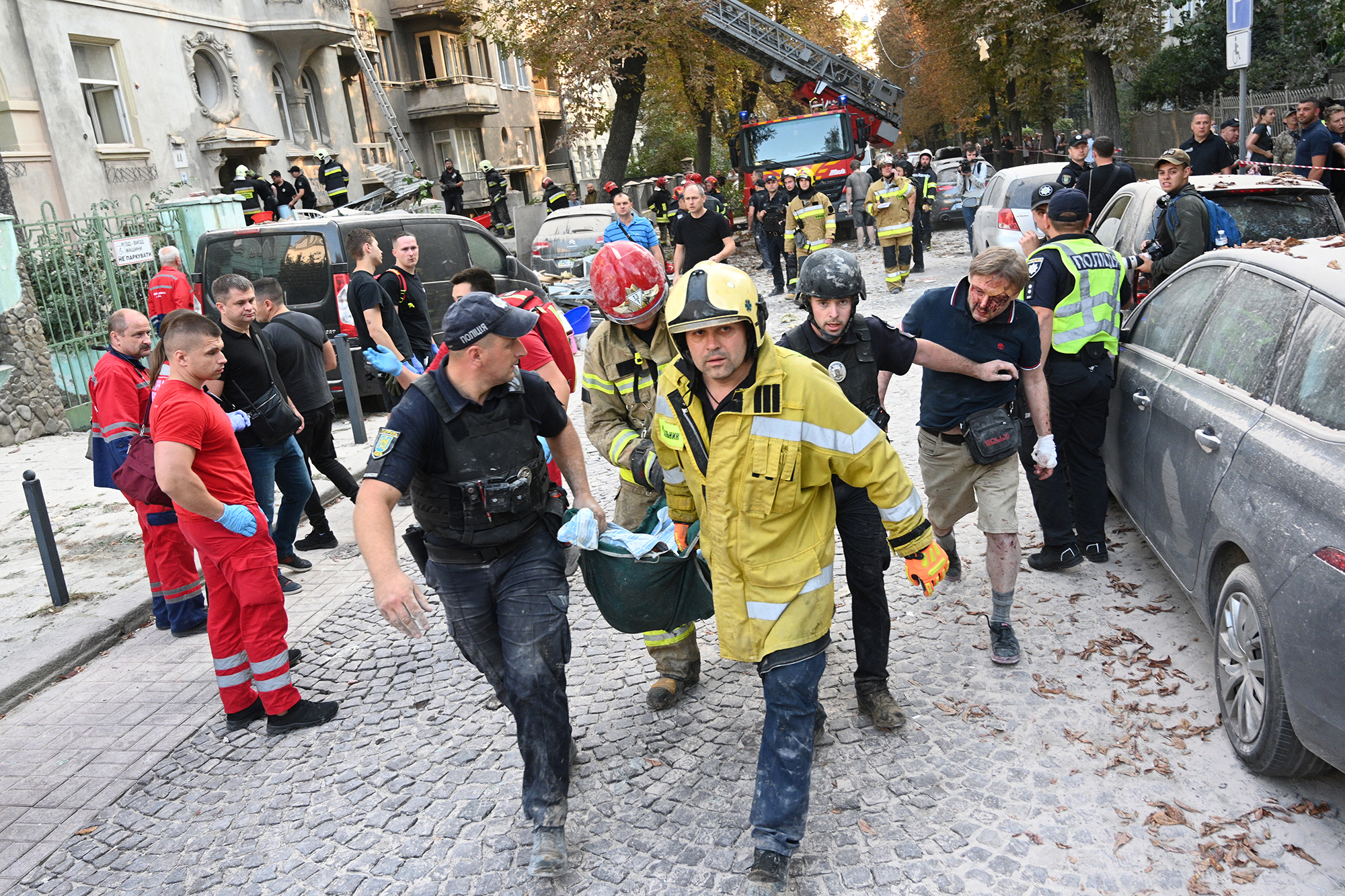 Lviv after the Russian September 4 strike (photo: Getty Images)
Lviv after the Russian September 4 strike (photo: Getty Images)
On September 4, Russia launched a Kinzhal attack on Lviv and killed 7 people, including almost the entire Bazylevych family - 3 children and the mother died under the rubble of the house where the Russian missile hit, and only the father survived. The day before, on September 3, a Russian missile killed 58 people in Poltava, attacking the Military Institute of Telecommunications and Informatisation.
For the Russians, the attack on a residential area of a Ukrainian city and the civilian casualties are so-called collateral damage, which, according to the Kremlin, will help to suppress morale and break the resistance of Ukrainians.
"Russians do not care how many Ukrainian civilians die. Putin doesn't care how many Ukrainian children, women, and old people die. He needs to achieve his goal and he is ready to kill. Russian missiles strike everywhere, including residential areas," Seleznov adds.
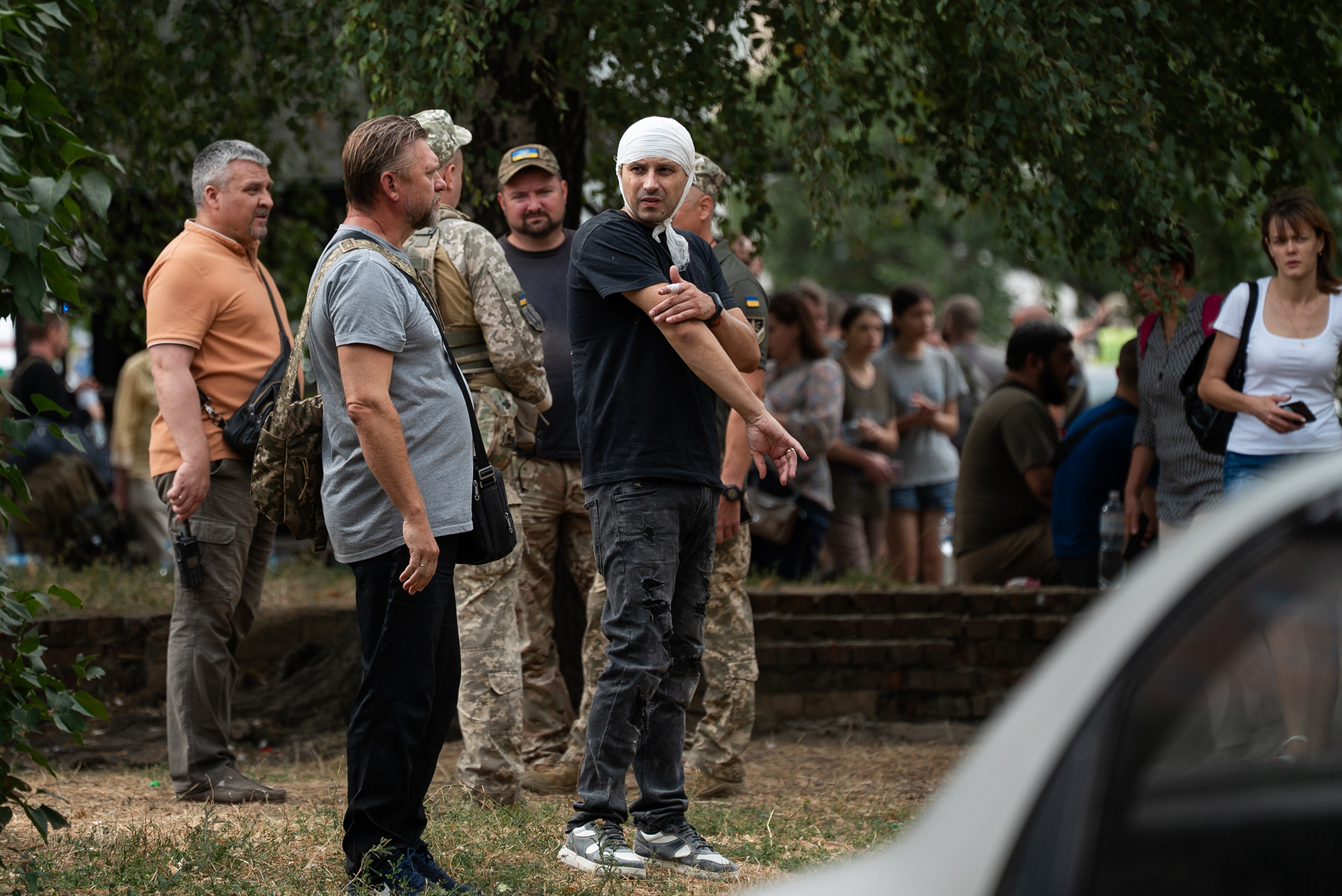 Poltava after a Russian rocket attack (photo: Getty Images)
Poltava after a Russian rocket attack (photo: Getty Images)
Revenge for Kursk?
The Ukrainian military's operation in the Kursk region began on August 7-10. Moscow did not expect the Ukrainian Armed Forces to enter Russian territory and was frankly surprised. Ukrainian troops took advantage of this and successfully advanced several tens of kilometers, securing control over the frontline territories. In this way, the Ukrainian army created a so-called buffer zone on the border with Russia. Russia itself promised to retaliate, scaring the Ukrainians with new red lines.
When the Russian Armed Forces fired more than 100 missiles into Ukraine on the night of August 26, many propaganda outlets called it retaliation for Kursk, although massive missile and drone attacks have been taking place regularly over the 2.5 years of full-scale war Russia's war against Ukraine.
The idea that one of the largest-scale attacks on Ukraine's civilian and critical infrastructure is a response to the Ukrainian Armed Forces' operation in the Kursk region is hardly correct, experts say. The fact is that Russia is preparing for such attacks in advance, stockpiling supplies and planning targets, said military expert, Major of the Armed Forces of Ukraine, Oleksii Hetman.
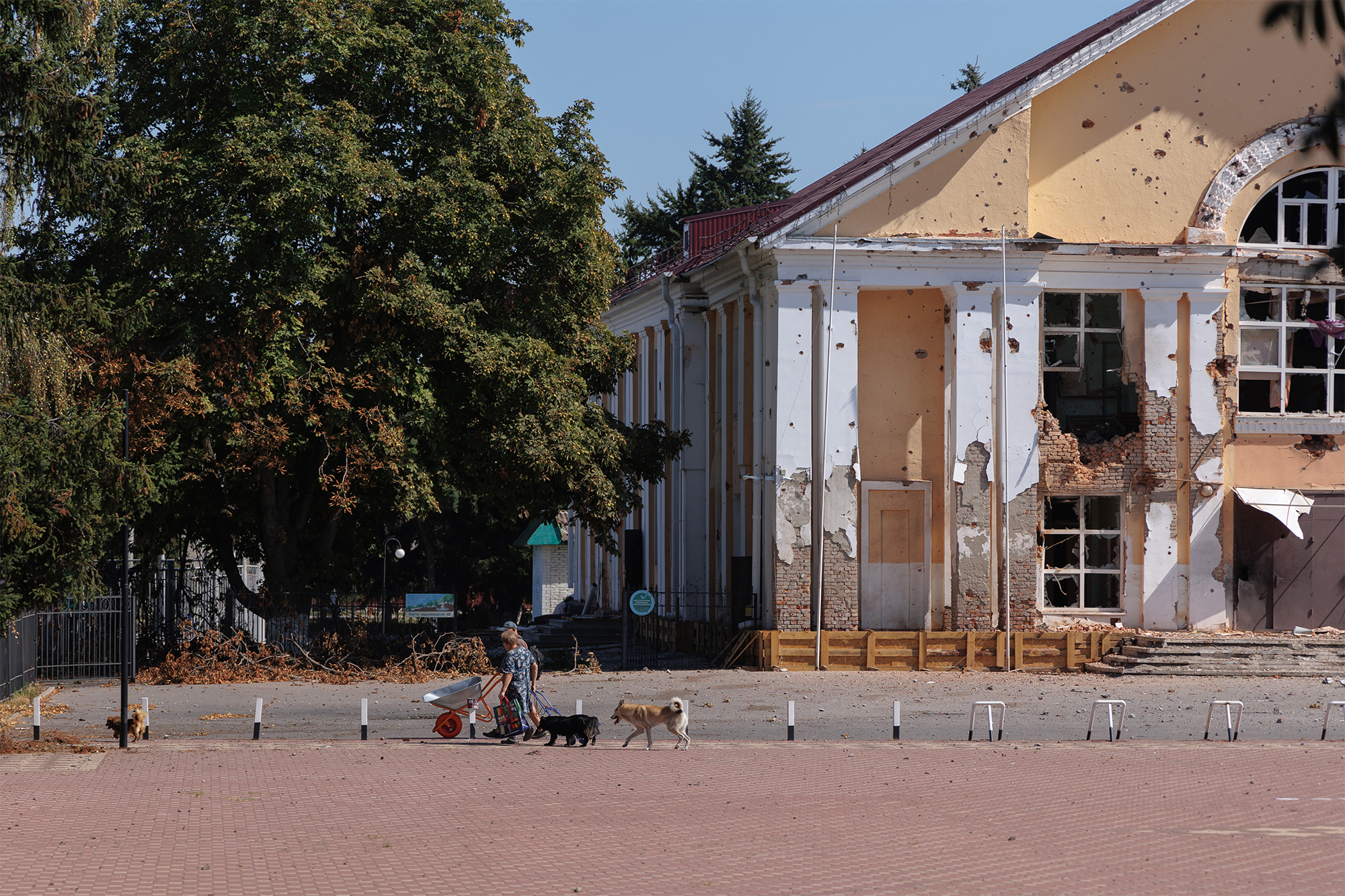 Sudzha under the control of the Ukrainian Armed Forces (photo: Getty Images)
Sudzha under the control of the Ukrainian Armed Forces (photo: Getty Images)
"It would be very easy to think that they are taking revenge on us for Kursk. It is difficult to take revenge during a war when you are planning your actions. They had been preparing the spring and summer campaign in the Donetsk region for six months, from the end of the year to May this year. To prepare such a response as revenge, the operations that were planned had to be changed or re-planned. In war, the army usually does not do this," says Hetman.
In the course of large-scale shelling, the Russian Armed Forces use missiles of various types, including new ones produced in 2023-24. They take time to manufacture and, judging by the year of production, they are used literally off the assembly line. Drones, on the other hand, are produced continuously and in large quantities. The Russians can afford to launch them into Ukraine every day, but these attacks can hardly be seen as revenge for Kursk.
"The Russians started their aggression against Ukraine in February 2022 not because they were trying to take revenge on us for something. Putin had a very clear goal - to destroy Ukraine as a state and as a part of the world. And the missiles and drone attacks that are ongoing today are aimed at achieving this mission," Seleznov says.
On the other hand, the idea that Moscow is trying to intimidate Ukrainians in this way and make them question the necessity of the Kursk operation cannot be completely dismissed. The Kremlin media almost immediately began to justify any territorialism by their army by saying that Kursk was captured by the Ukrainian army. This narrative, despite the obvious problem of causality, quickly gained popularity. Therefore, the increased Russian shelling of the Sumy region was also perceived by Russians as revenge for Kursk.
"If we take the Sumy region, the Russian shelling there intensified on August 10, when the Kursk operation began. It was then that the Sumy region came under the focus of Russian attacks. In all other areas, I can't say that nature has changed. There is constant Russian shelling there, they are constantly shooting at everything they can get their hands on. I think they will do everything to keep up this pace throughout the autumn and early winter when we will have more problems with energy," says military expert Pavlo Narozhnyy.
Russia's attack on Ukrainian energy sector
Russia is not abandoning its plans to destroy Ukraine's energy sector. Before the active phase of Russian shelling began, the Russian Armed Forces systematically conducted and continued to conduct reconnaissance of the Ukrainian energy infrastructure, alternating it with attacks on energy facilities. After the August 26 strikes, Ukraine reintroduced blackout schedules for a while, although the situation with energy shortages had been resolved before then - at the same time, Ukrenergo energy company said that there would be no blackouts until the onset of cold weather and the start of the heating season, provided there was no Russian shelling.
The Russians are well aware that without energy, processes inside the country slow down, particularly when it comes to the military-industrial complex. In addition, constant power cuts have a major impact on the mood of Ukrainians and can potentially lead to discontent, which is what the Kremlin is counting on. Therefore, the tactic of Russian shelling the Ukrainian energy sector is still used as one of the most effective. While in 2022-23, the Russian military targeted transformer substations, today they are attacking thermal power plants, which are more expensive and take longer to restore.
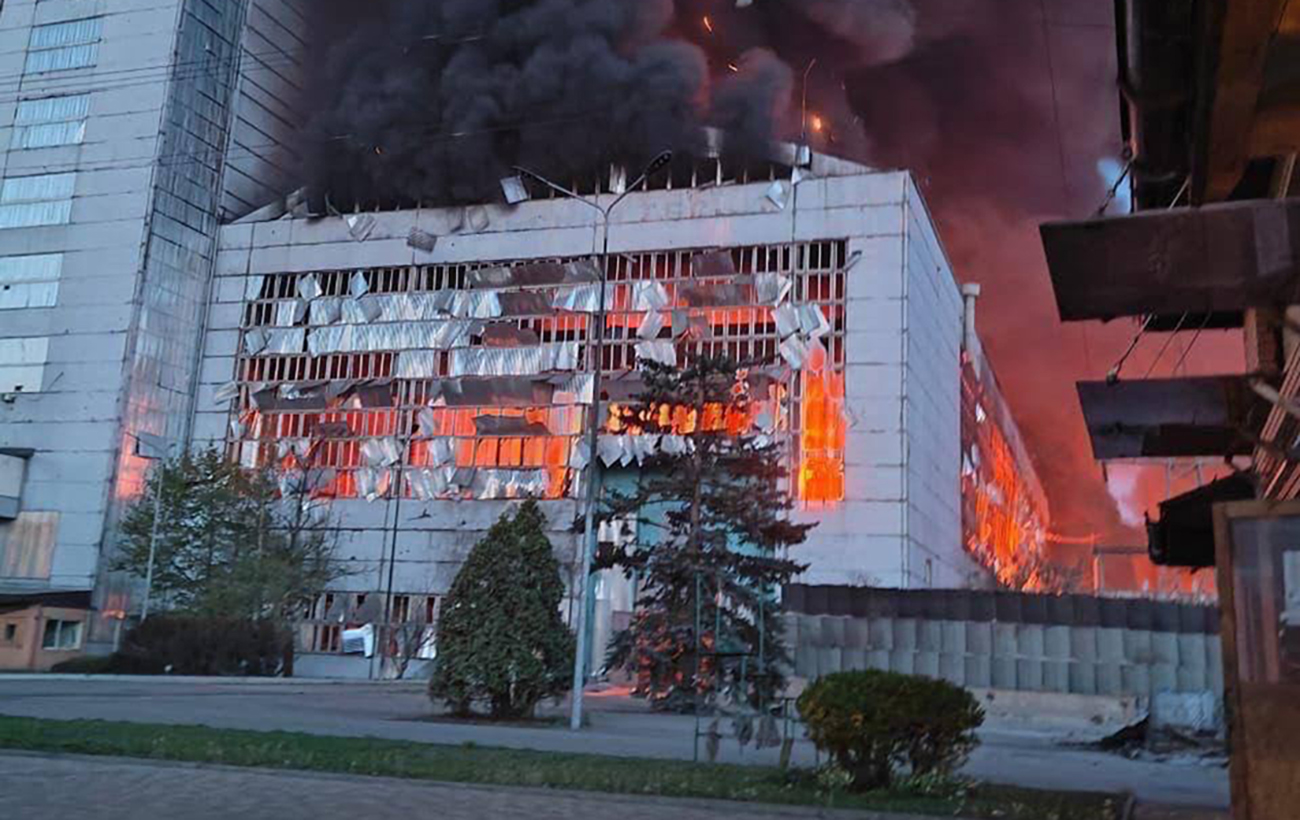 Trypillia TPP after the Russian shelling (photo: Telegram channel Lachen Pyshe)
Trypillia TPP after the Russian shelling (photo: Telegram channel Lachen Pyshe)
"It is obvious to me that Russia is acting rationally. Because Russia uses attacks on those objects that are critically important to Ukrainians. And Russians carry out these attacks without reference to any dates. They have the resources to carry out these tasks, they verified intelligence information about the presence of certain critical facilities in Ukraine, and it is there that they will strike," Seleznov says.
The active phase of Russian shelling will continue until the onset of cold weather, and Russian troops will continue to carry out large-scale strikes every six weeks. Thus, the Russians want to maintain the critical state of the Ukrainian energy sector and put pressure on the morale of the Ukrainians.
Another factor behind the increased frequency of shelling is the fighting at the frontline. According to Hetman, the Russian army did not achieve its goals during its spring and summer campaign. There is progress, but it is not as significant as the Kremlin would like.
"We know through our intelligence that their minimum plan was to reach the borders of the Donetsk and Luhansk regions and administrative borders, and their maximum plan was to reach the left bank of the Dnipro River across the country. We see that the offensive took place, but not significantly, especially given their huge losses, so they are trying to help the army by destroying us in the middle of the country," says Hetman.
Intensity at front and beyond
The Russians seek to maintain the intensity of shelling based on the resources they have. Today, they can fire 20-30 missiles at Ukraine about once a week, and drones every day. At the front, it is also important not to lose the initiative and continue to advance, and this also requires resources. It is still too early to say that the Russian army has stopped in two key areas - Kurakhove and Pokrovsk. Russia, not unlike itself, uses a huge amount of human resources in meat assaults and bombards the Ukrainian army with artillery shelling. But any resource will sooner or later run out of steam, as the head of the Defense Intelligence of Ukraine, Kyrylo Budanov, stated in early August.
"In a month and a half to two months, the main offensive of the Russian army should be over, because the offensive has already been dragged out," Budanov said at a meeting with graduates of the Kyiv School of Economics.
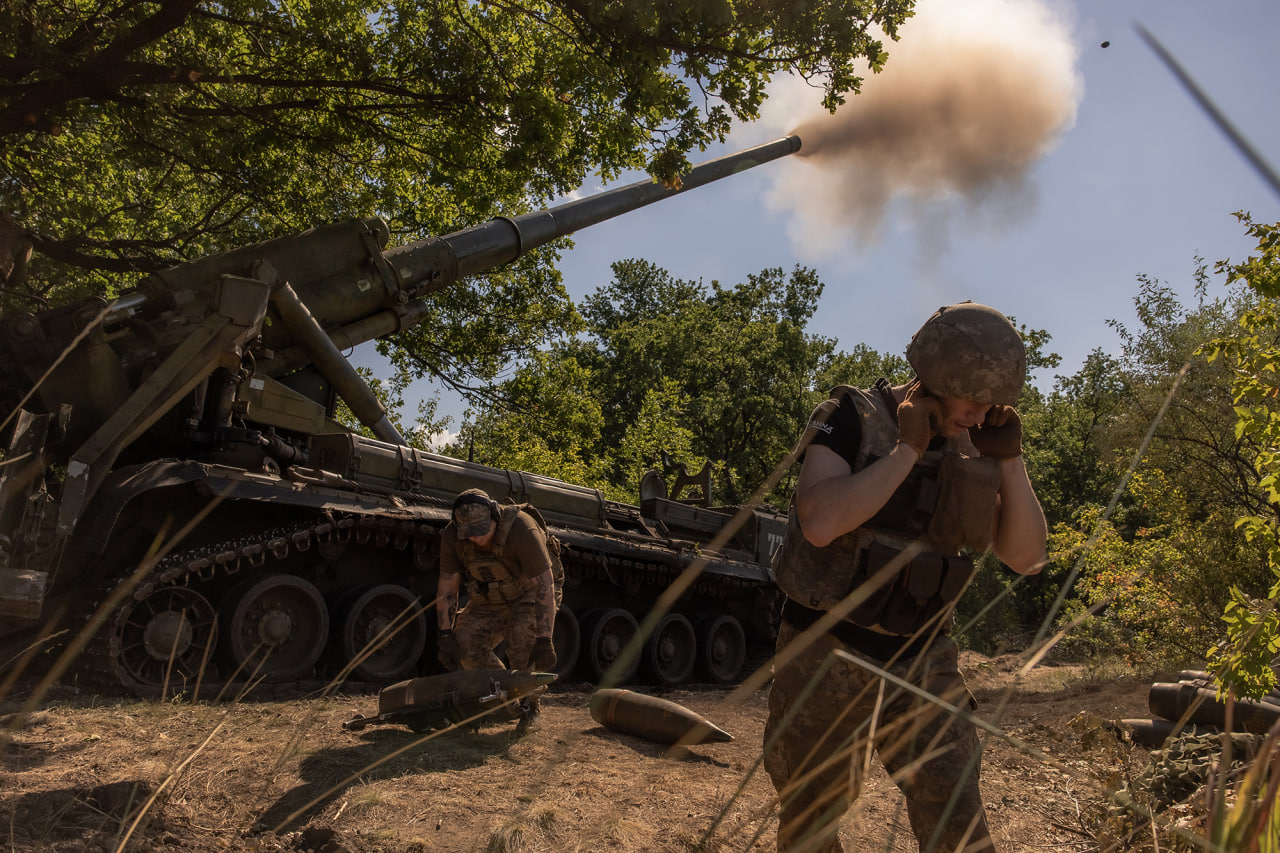 Fighting near Pokrovsk (Photo: Getty Images)
Fighting near Pokrovsk (Photo: Getty Images)
According to the head of the Defense Intelligence of Ukraine, the intensity of the Russian offensive may decrease by October. To keep up the pace, the Russian army needs weapons and ammunition. To this end, Russian emissaries continue to hold dialogues with countries loyal to them and seek Soviet stockpiles. And not only that - Russia has managed to obtain ballistic missiles from the DPRK, which are already firing at Ukraine, and recently foreign intelligence services reported that Iran is finally ready to share its missiles.
Having received ballistic missiles from Tehran, the Russians can spend their Iskander stockpile more rationally. By using Iranian missiles to strike the frontline regions, the Russian army can use its ballistic missiles to strike deeper into Ukraine, keeping the Ukrainian Air Defense Forces and the economy under constant strain. In this way, Russia will be able to continue to pressure Ukrainians with shelling, while suspending offensive operations on the frontline. However, the large-scale attacks themselves have little impact on the situation in the war zone.
"Russians will continue their offensive until the end of September at the latest, and then it's over - the weather conditions will be on our side, and they will run out of the capabilities they have been preparing. They will shoot, but it will be useless. The purpose of this is simply to make us feel bad and it will affect Ukrainian offensive capabilities," says Hetman.
In this context, the possible long-awaited permission of Ukraine's allies to strike deep into Russia's rear, destroying valuable supplies, airfields, and aircraft, looks very appropriate.
